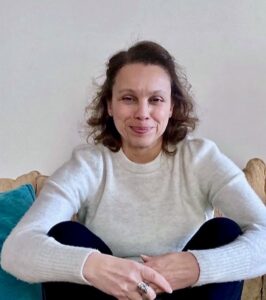Teaching Students with ADHD
“Each of us can learn the art of nourishing happiness and love. Everything needs food to live, even love. If we don’t know how to nourish our love, it withers. When we feed and support our own happiness, we are nourishing our ability to love. That’s why to love means to learn the art of nourishing our happiness.” — Thích Nhất Hạnh
I teach Spanish to middle school students, many of whom have been diagnosed with ADHD (Attention-Deficit/Hyperactivity Disorder). Working with these students often involves teaching them how to sustain attention long enough to cultivate a sense of calm understanding. It’s also about developing emotional awareness and self-regulation so they aren’t easily distracted or pulled away from meaningful experiences. Some students take medication to help manage their symptoms. While I have mixed feelings about medicating for ADHD, I find the process of learning to hold one’s own attention—and the attention of others—deeply fascinating. I believe that our ability to focus on what nourishes the mind, body, and loving spirit matters more than anything. Building a mindfulness practice toward this aim, as an alternative or complement to medication, can be profoundly valuable. Mindfulness meditation, as a way of training attention, offers an alternative pathway in life—one with enormous, often unexpected, rewards.
One technique I use in my class is sitting together in a circle to do a mindful body scan in the target language. We begin each session this way. The goal is to practice Spanish vocabulary while training the mind to sustain attention on each body part, from head to toe. We do this first with our eyes open, then with our eyes closed. Sometimes, settling the group around the circle takes time—the students giggle, talk, and trigger one another in ways that make it hard to turn their attention inward. As the teacher in the circle, I draw on my own daily mindfulness practice, which has cultivated compassion and patience over the years. Even so, I occasionally have to rely on other behavior management strategies until the group is fully quiet. I emphasize that we don’t begin until everyone is seated in good posture and silent. I remind them that the circle is a community—each person’s presence affects the whole. We wait until everyone is ready. This can take time, and I’ve had to reflect on how much is acceptable, given other items on the day’s agenda. Yet I’ve learned that language learning cannot happen without the ability to pay attention—to ourselves and to one another—through quiet and listening.
To do this work, I must maintain my own daily mindfulness meditation practice. It ensures that, when I’m with my students, I am present and authentic. Children are sensitive to the energy of the adults around them; if we hope to communicate reverence for an experience, we must embody it. This is not always easy. I can be triggered by many things myself, so staying with the practice—no matter how long I have to wait or how often I must repeat the same guidance—requires discipline and commitment to an idea that takes time to grow. For this reason, it is a practice of love. We return again and again to what we love and value, offering our attention as nourishment. We may not know how quickly or how deeply it will grow, but through our loving gaze and steady care, we trust that something lasting and meaningful is taking root.
Lately, I’ve been reflecting on the connection between happiness and love, and how this relationship shapes my teaching. When I lead these mindfulness activities, I have to genuinely enjoy them—my joy is part of my love language as a teacher. If I’m not feeling joyful—if traces of anger, impatience, boredom, or anxiety are present—the practice loses some of its vitality. That’s why I’m intentional about how I show up each day. I can’t be the best teacher I can be unless I’m at peace with myself, my life, and how I choose to spend my time. In this case, I choose to spend my time with these children, and I believe they can sense whether I want to be there or not. My state of happiness matters; children are acutely attuned to this energy.
As a teacher, navigating the politics and pressures of the profession, I’ve learned to protect my own joy. One way I do this is by ensuring that the activities filling my day are meaningful and pleasant to me. I spend time watering plants, freshening the air with a natural cleaner, adjusting the lighting, and designing lessons around games and creative play. I integrate hand puppets, Scrabble, music, and art—anything that keeps the spirit of learning lighthearted and alive. These choices remind me that good teaching is rooted in happiness and love. When I drift too far from that truth, I risk losing the essence of my life’s work—and the kind of attentive, mindful presence I hope to cultivate in my students.
Discover more from The Mindful Lighthouse
Subscribe to get the latest posts sent to your email.



Maravillosa reflexion. Poner el amor en el centro de tu vida y tu trabajo , hace que tus esfuerzos merezcan la pena.
Sea construir una casa, cultivar un jardin, atender al publico, enseñar a estudiantes o cualquier otra actividad, si se hace con amor y consciencia plena, todo es mucho mas facil. Para los que te rodean y para ti.
La vida ya nos exije demasiado . Pero somos nosotros quienes decidimos si “Estamos en ella ” o simplemente “sobrevivimos.